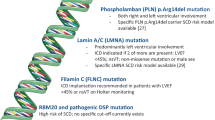Abstract
Animal models that mimic human electrical and mechanical dyssynchrony often associated with chronic heart failure would provide an essential tool to investigate factors influencing response to cardiac resynchronization therapy. A standardized closed-chest porcine model of left bundle branch block (LBBB) was developed using 16 pigs. Radiofrequency applications were performed to induce LBBB, which was confirmed by QRS widening, a surface electrocardiogram pattern concordant with LBBB, and a prolonged activation time from endocardial. Echocardiography confirmed abnormal motion of the septum, which was not present at the baseline echocardiogram. High susceptibility of pigs to ventricular fibrillation during the endocardial ablation was overcome by applying high-rate pacing during radiofrequency applications. This is the first study to devise a closed-chest porcine model of LBBB that closely reproduces abnormalities found in patients with electrical and mechanical cardiac dyssynchrony, and provides a useful tool to investigate the basic mechanisms underlying cardiac resynchronization therapy benefits in heart failure.




Similar content being viewed by others
References
Cleland, J. G., Daubert, J. C., Erdmann, E., Freemantle, N., Gras, D., Kappenberger, L., et al. (2005). The effect of cardiac resynchronization on morbidity and mortality in heart failure. The New England Journal of Medicine, 352(15), 1539–1549.
Solanes, N., Rigol, M., Khabiri, E., Castellà, M., Ramírez, J., Roqué, M., et al. (2005). Effects of cryopreservation on the immunogenicity of porcine arterial allografts in early stages of transplant vasculopathy. Cryobiology, 5, 1130–1141.
Rigol, M., Solanes, N., Sionis, A., Gálvez, C., Martorell, J., Rojo, I., et al. (2008). Effects of cyclosporine, tacrolimus and sirolimus on vascular changes related to immune response. The Journal of Heart and Lung Transplantation, 27, 416–422.
Rigol, M., Solanes, N., Farré, J., Roura, S., Roqué, M., Berruezo, A., et al. (2010). Effects of adipose tissue-derived stem cell therapy after myocardial infarction: impact of the route of administration. Journal Cardiac Failure, 16, 357–366.
Shofti, R., Zaretzki, A., Cohen, E., Engel, A., & Bar-El, Y. (2004). The sheep as a model for coronary artery bypass surgery. Laboratory Animals, 38, 149–157.
Chorro, F. J., Such-Belenguer, L., & López-Merino, V. (2009). Animal models of cardiovascular disease. Revista Española de Cardiología, 62(1), 69–84.
Murry, C. E., Field, L. J., & Menasché, P. (2005). Cell-based cardiac repair: reflections at the 10-year point. Circulation, 112(20), 3174–3183.
van Deursen, C., van Geldorp, I. E., Rademakers, L. M., van Hunnik, A., Kuiper, M., Klersy, C., et al. (2009). Left ventricular endocardial pacing improves resynchronization therapy in canine left bundle-branch hearts. Circular Arrhythm Electrophysiology, 2(5), 580–587.
Mills, R. W., Cornelussen, R. N., Mulligan, L. J., Strik, M., Rademakers, L. M., Skadsberg, N. D., et al. (2009). Left ventricular septal and left ventricular apical pacing chronically maintain cardiac contractile coordination, pump function and efficiency. Circular Arrhythm Electrophysiology, 2(5), 571–579.
Vernooy, K., Verbeek, X. A., Peschar, M., Crijns, H. J., Arts, T., Cornelussen, R. N., et al. (2005). Left bundle branch block induces ventricular remodelling and functional septal hypoperfusion. European Heart Journal, 26, 91–98.
Kerckhoffs, R. C. P., Lumens, J., Vernooy, K., Omens, J. H., Mulligan, L. J., Delhaas, T., et al. (2008). Cardiac resynchronization: insight from experimental and computational models. Progress in Biophysics and Molecular Biology, 97(2–3), 543–561.
Marrouche, N. F., Pavia, S. V., Zhuang, S., et al. (2002). Nonexcitatory stimulus delivery improves left ventricular function in hearts with left bundle branch block. Journal of Cardiovascular Electrophysiology, 13, 691–695.
Parsai, C., Bijnens, B., Sutherland, G. R., Kim, Y. J., Tabata, T., Wallick, D., et al. (2009). Toward understanding response to cardiac resynchronization therapy: left ventricular dyssynchrony is only one of multiple mechanisms. European Heart Journal, 30, 940–949.
Olgin, J. E., & Zipes, D. P. (2007). Specific Arrhythmias: Diagnosis and Treatment. In P. Libby, R. O. Bonow, D. L. Mann, & D. P. Zipes (Eds.), Braunwald’s heart disease: a textbook of cardiovascular medicine (8th ed.). Philadelphia: Saunders Elsevier. Chap 35.
Thomas, G., Gurung, I. S., Killeen, M. J., Hakim, P., Goddard, C. A., Mahaut-Smith, M. P., et al. (2007). Effects of L-type Ca2+ channel antagonism on ventricular arrhythmogenesis in murine hearts containing a modification in the Scn5a gene modelling human long QT syndrome 3. The Journal of Physiology, 578(Pt 1), 85–97.
Bordachar, P., Grenz, N., Jais, P., Ritter, P., Leclercq, C., Morgan, J. M., et al. (2012). Left ventricular endocardial or triventricular pacing to optimize cardiac resynchronization therapy in a chronic canine model of ischemic heart failure. American Journal of Physiology - Heart and Circulatory Physiology, 303(2), H207–H215.
Liu, L., Tockman, B., Girouard, S., Pastore, J., Walcott, G., KenKnight, B., et al. (2002). Left ventricular resynchronization therapy in a canine model of left bundle branch block. American Journal of Physiology - Heart and Circulatory Physiology, 282, H2238–H2244.
Vernooy, K., Cornelussen, R. N. M., Verbeek, X. A., Vanagt, W. Y., van Hunnik, A., Kuiper, M., et al. (2007). Cardiac resynchronization therapy cures dyssynchronopathy in canine left bundle-branch block hearts. European Heart Journal, 28, 2148–2155.
Acknowledgments
The authors are grateful to the Universitat de Barcelona facilities, Neus Portella (Hospital Clínic, Barcelona, Spain) for assistance, and Elaine Lilly, Ph.D. for English editing. They also acknowledge David Andreu (Hospital Clínic, Barcelona, Spain) and Daniel Traver (Biosense Webster, Barcelona, Spain) for their support on the electroanatomic mapping and ablation devices.
Funding
This study was supported in part by grants from the CENIT program of the Centro de Desarrollo Tecnológico Industrial (cvREMOD project; CEN-20091044), and the Spanish Government, REDINSCOR RD06/0003/0008. A Doltra received a personal grant from Fundació Clinic.
Author information
Authors and Affiliations
Corresponding author
Additional information
Montserrat Rigol and Núria Solanes contributed equally to this study.
Rights and permissions
About this article
Cite this article
Rigol, M., Solanes, N., Fernandez-Armenta, J. et al. Development of a Swine Model of Left Bundle Branch Block for Experimental Studies of Cardiac Resynchronization Therapy. J. of Cardiovasc. Trans. Res. 6, 616–622 (2013). https://doi.org/10.1007/s12265-013-9464-1
Received:
Accepted:
Published:
Issue Date:
DOI: https://doi.org/10.1007/s12265-013-9464-1




